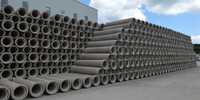Semi-dry Concrete
Semi-dry concrete is used in the manufacture of concrete paving stones, building blocks, kerbstones, gardening and landscaping elements, roof tiles, concrete paving tiles, pipes and manholes, and hollow-core slabs. It should be readily de-moldable, exhibit a granular aspect after mixing, and retain the mold shape. Vibrating-press systems allow for efficient industrial production as only one mold is required per product shape.
Holderchem supplies customers with compaction aids and efflorescence reducers to enhance semi-dry concrete properties. As indicated by its name semi-dry concrete is produced at low water-cement ratios ranging from 0.38 ± 0.02 with relatively low cement and a high content of pozzolanic substitutes to replace cement. Compaction is critical as it is essential in ensuring concrete elements retain their shape. It is generally enhanced in mixes with a higher content of water, which acts as a lubricant, increased binder content, and compaction aids admixtures to enhance compaction and concrete homogeneity and strength, as concrete densities are increased. Green strengths in the range of 0.1 to 1 MPa should be achieved to allow the molds to keep their shape. To achieve 24 hour strength of 10 MPa, to withstand stacking on a pallet, the concrete units are cured for 24 hours in a chamber at temperatures hovering around 35°C.
Efflorescence (and discoloration) is a common issue that affects aesthetics. It results from free calcium hydroxide, capillaries that fill with water, and low evaporation rates. The efflorescence is white calcium carbonate or limestone, which results from the reaction of calcium hydroxide with the air carbon dioxide. To minimize efflorescence, a dense concrete structure, and lower evaporation rates during curing, should be sought. The application of hydrophobic efflorescence reducing admixtures minimizes surface efflorescence as it reduces capillary water absorption. It is also recommended good air circulation be secured to achieve better hydration by the time the concrete elements leave the curing chamber. Freeze-thaw resistance is enhanced by low water-cement ratios, enhanced cement hydration and low pore content.


